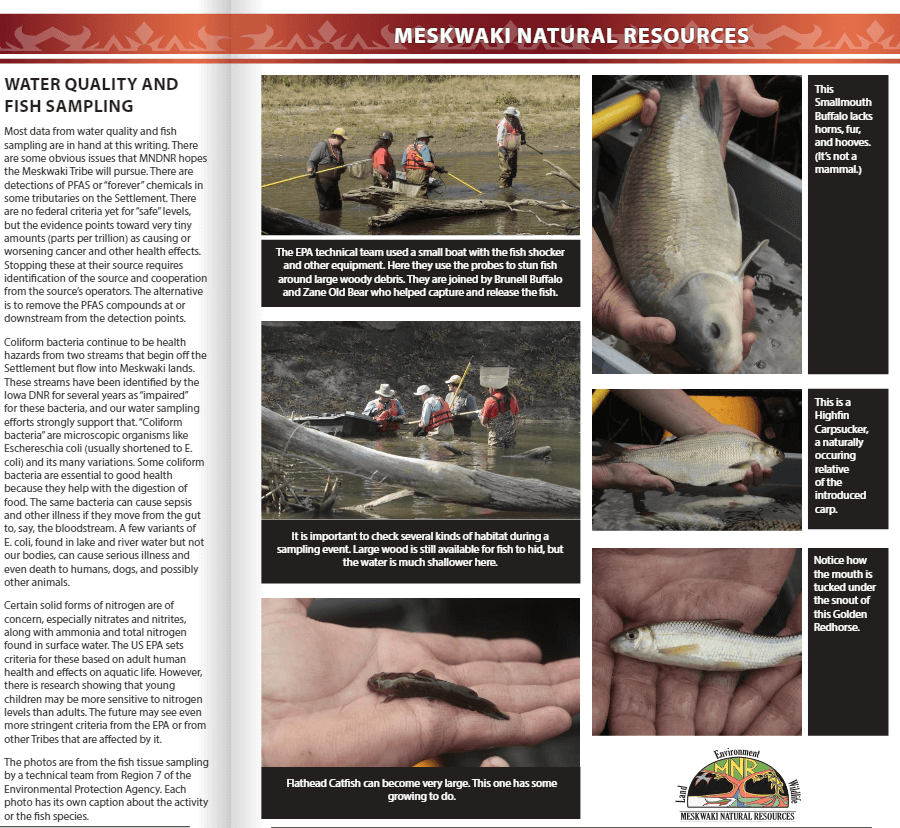ATER QUALITY AND FISH SAMPLING
Most data from water quality and fish sampling are in hand at this writing. There are some obvious issues that MNDNR hopes the Meskwaki Tribe will pursue. There are detections of PFAS or “forever” chemicals in some tributaries on the Settlement. There are no federal criteria yet for “safe” levels, but the evidence points toward very tiny amounts (parts per trillion) as causing or worsening cancer and other health effects. Stopping these at their source requires identification of the source and cooperation from the source’s operators. The alternative is to remove the PFAS compounds at or downstream from the detection points.
Coliform bacteria continue to be health hazards from two streams that begin off the Settlement but flow into Meskwaki lands. These streams have been identified by the Iowa DNR for several years as “impaired” for these bacteria, and our water sampling efforts strongly support that. “Coliform bacteria” are microscopic organisms like Eschereschia coli (usually shortened to E. coli) and its many variations. Some coliform bacteria are essential to good health because they help with the digestion of food. The same bacteria can cause sepsis and other illness if they move from the gut to, say, the bloodstream. A few variants of E. coli, found in lake and river water but not our bodies, can cause serious illness and even death to humans, dogs, and possibly other animals.
Certain solid forms of nitrogen are of concern, especially nitrates and nitrites, along with ammonia and total nitrogen found in surface water. The US EPA sets criteria for these based on adult human health and effects on aquatic life. However, there is research showing that young children may be more sensitive to nitrogen levels than adults. The future may see even more stringent criteria from the EPA or from other Tribes that are affected by it.
The photos are from the fish tissue sampling by a technical team from Region 7 of the Environmental Protection Agency. Each photo has its own caption about the activity or the fish species.
View full story here: https://heyzine.com/flip-book/4fd437d61b.html#page/18

